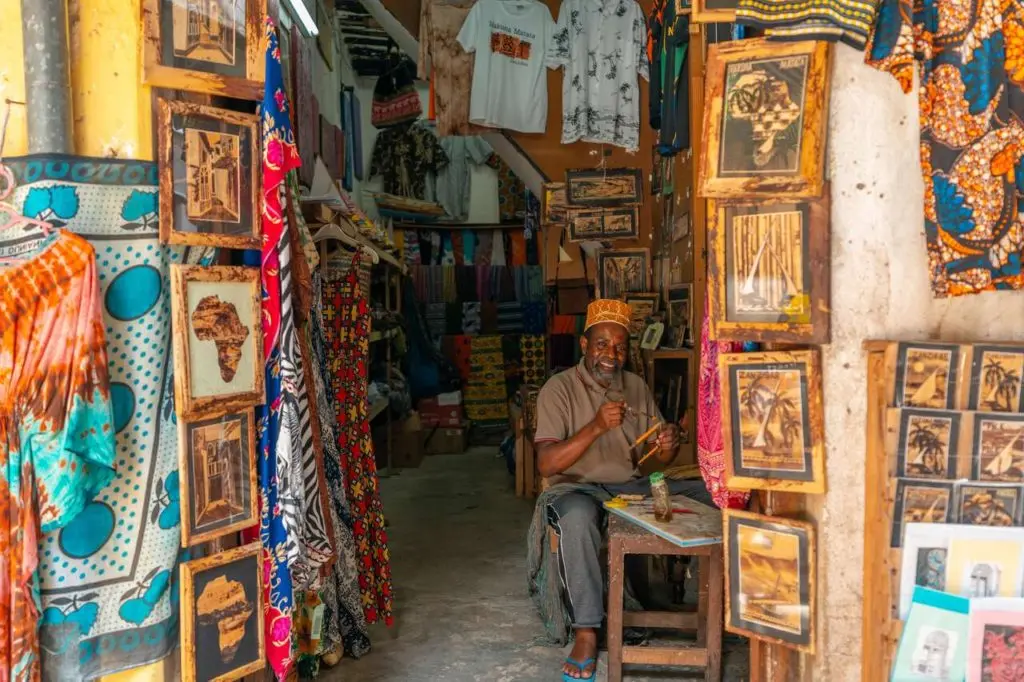Cultural & Historical Tours in Zanzibar: A Deep Dive into the Island's Soul
There’s this strange thing that happens sometimes—a song you haven’t heard in years drifts through the air, and for a second, you’re somewhere else entirely. That’s what happened to Layla as she stepped off the ferry into Stone Town. That’s what hit Layla the second she stepped off the ferry into Stone Town. Her backpack was digging into her shoulder, her sandals still carrying the dust of Dar’s busy streets—and yet, something about this place already felt familiar, like a half-remembered dream.
Maybe it was the scent—cloves, sun-dried wood, salt, old earth. Maybe it was the labyrinth of alleyways, where every turn looked like a page from a forgotten book. Either way, she knew right then: she wasn’t just on a vacation. She was walking into a story. A layered one. One with spice routes and sultans, drums and dhows, echoes of poetry, and silences heavier than stone.
More Than a Beach Escape
Most people? They hear Zanzibar, and their brain flashes palm trees, hammocks, blue water. And fair enough. It’s gorgeous. But man, that’s barely scratching the surface. What about the walls of the Old Fort? What about the whispers of the Arab traders, or the clang of iron doors in the Slave Market chambers? If you know, you know.
Local guide Faraji says it best. “To understand Zanzibar, you gotta eat with your hands, dance till your calves hurt, and listen when the old ones speak.” He runs immersive cultural Zanzibar tour plans that dig deep. Like, real deep. One minute you're sipping coffee with a historian in a Persian-influenced courtyard, next you're being shown how to fold a kanga the traditional way by a granny who’s been doing it since before independence.
Voices Etched in Coral Stone
There’s something about coral rag buildings. They're like living archives. They breathe, they hold. The walls of Stone Town are a warm kind of worn—soft from sea air, tough from centuries of weathering. Layla wandered through them with Faraji, listening to tales of sultans who ruled from wooden balconies and of Indian merchants who etched prayers above their carved door frames.
Pause. Right there. That door? Covered in brass studs. Indian-Gujarati influence. But see the arch? That's Omani. And the Arabic inscription? Pure Swahili rhythm. Zanzibar’s history isn’t one story. It’s braided, woven like a good kofia hat.
Layla wrote in her journal later that day: “Today I saw stories trapped in wood.”
Rituals, Rhythms, Realness
Now, don’t get it twisted. Culture ain’t all in the past. It’s in the now. In the kids clapping rhythms on upturned buckets. In the smell of coconut oil at the Forodhani night market. It’s in the hush that falls at maghrib when the call to prayer dances across the rooftops. And if you’re lucky enough to sit in on a local taarab performance, with the qanun twinkling and the voices rising like incense—just sit still. That’s a prayer too.
One of the best places to settle into the vibe? A cozy hotel near historic Stone Town. Somewhere old but held together with love. Where the floors creak and the tea’s got cloves, and the staff will call you "dada" or "kaka" by the second day. Those are the kind of places that stay with you longer than sunscreen tans.
Markets, Medinas, and the Stories Between

Let’s talk Darajani Market. Absolute chaos. A beautiful mess. Fish scales glinting under flickering lights, spices stacked like pyramids, mangoes sweeter than gossip, and voices everywhere. Layla tagged along with Mama Asha, a street food vendor with the sharpest tongue and warmest laugh on the island. Mama Asha showed her how to haggle—not just with words but with rhythm. Like a dance.
“They respect confidence,” she said. “But don’t overdo it. Smile with your eyes.”
That day Layla bought tamarind paste, some cardamom pods, and a tiny hand-woven mat. But what she carried most? The look in Mama Asha’s eyes when she spoke about the old days. Back when her grandmother used to walk those same streets, barefoot, carrying fish in a banana leaf wrap.
From Spice Farms to Sacred Caves
Outside the towns, there’s another heartbeat. The clove farms hum. Not loud, but steady. The guides here? They’re farmers, storytellers, herbalists. They’ll show you cinnamon bark, how it curls as it dries. Tell you which root is best for colds. Which leaf wards off spirits.
And then there’s the sacred caves—like Kuza Cave in Jambiani. Water so clear it almost disappears. The cave itself feels like an inhale. Cool, still, deep. Local legend says spirits dwell there, watching. Respect is non-negotiable. Layla swam anyway. Said later she felt both lighter and heavier coming out. Make of that what you will.
Building Your Own Connection
The truth? No two visits are the same. And that’s the magic of it. Your path winds where it wants to. And if you let go of the agenda, Zanzibar’ll show you things—softly. At its pace.
There are guides, of course. But sometimes your best teacher’s the waiter who cracks a joke about your Swahili. Or the little girl who grabs your hand and walks you to the ferry terminal. You don’t need a degree in anthropology to connect deeper with every journey. You just need to listen more than you talk.
Where to Begin
If you’re wondering where to even start, here’s a wild idea. Don’t. Just arrive. Walk. Get lost. Ask questions. Eat everything twice. And when you need guidance, find folks like Faraji or Mama Asha. They’ll point you somewhere honest.
Better yet, check the local bulletin boards. Sometimes there are elders who host storytelling nights or language exchanges. And yeah, some places offer curated tour plans, which are solid if you’re pressed for time. But don’t treat it like a checklist. It’s not about what you saw. It’s about what shifted in you.
Parting Thoughts
Layla’s last night was spent under a bougainvillea-covered veranda, sipping spiced tea, watching the sun drop like it was tired. She was quiet. That kind of quiet you get after a good conversation or a long cry.
She didn’t take a selfie. Didn’t tweet it. She just breathed in the dusk and whispered to herself, “This place changed me.”
Zanzibar’s like that. A shape-shifter. A soft teacher. A keeper of deep things. You just have to show up with both your feet and your heart. Everything else? It’ll find its place.
And if you're after a place to rest between all that wandering, there’s always a cafe in stone town waiting with mint tea, a fan slowly spinning overhead, and stories in the walls. All you gotta do is listen.


